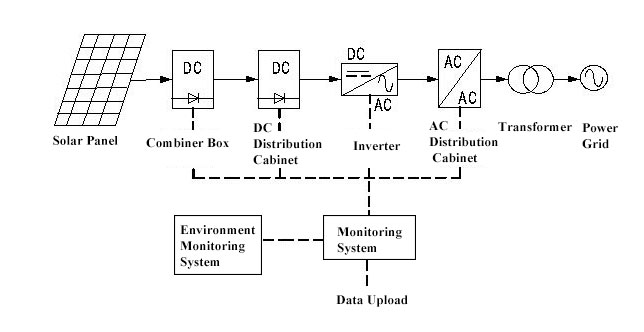The solar PV system is constituted by the solar cell, storage battery pack, charge controller, inverter, AC power distribution cabinet, lightning protection system, combiner box, DC power distribution cabinet, environmental monitoring system, monitoring system and other devices. The following is the overview of the main components of a solar PV system.
Solar cell
With sunshine, the solar cell absorbs light energy, and the accumulation of heterocharge occurs at both ends of the solar cell, thus producing the photo voltage, which is called the photovoltaic effect. Under the action of the photovoltaic effect, the two ends of the solar cell generate an electromotive force to convert light energy into electrical energy, so the solar cell is a device for energy conversion. Solar cells are generally silicon cells, which are classified into the monocrystalline silicon cell, the polycrystalline silicon solar cell, and the non-monocrystalline silicon solar cell.
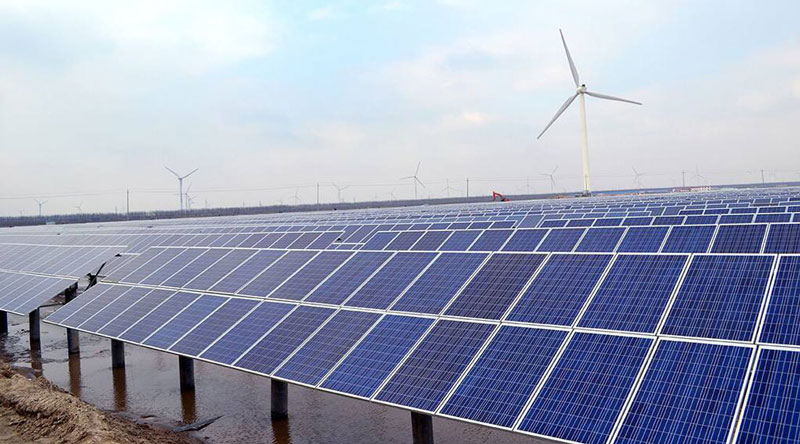
Storage battery
The function of storage battery pack is to store the electrical energy emitted by the solar array when it is illuminated and supply power to the load at any time. The basic requirement of solar cell power generation for the battery pack used are as below.
- Low self-discharge rate
- Long service life
- Strong deep discharge capability
- High charging efficiency
- Less maintenance or even no maintenance
- Wide range of working temperature
- Low price yet high quality
At present, the batteries matched with solar power systems are mainly lead-acid batteries and nickel-cadmium batteries. If it is matched with the lead-acid batteries above 200Ah, fixed-type or industrial-sealed maintenance-free lead-acid batteries are usually used. The rated voltage of each battery is 2VDC. If it is matched with the lead-acid batteries below 200Ah, small-size sealed maintenance-free lead-acid batteries are generally used. The rated voltage of each battery is 12VDC.
Solar charge controller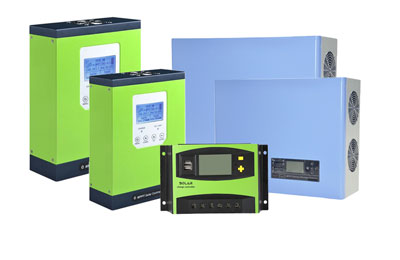
The solar charge controller is a kind of equipment that can automatically prevent overcharging and over discharging of the batteries. Since the times of the battery circular charging and discharging, and the depth of discharge are important factors determining the service life of the battery, the solar charge controller which can control the over charge and over discharge of the battery pack is an indispensable equipment.
Solar inverter
The inverter is used for converting DC power into AC power. Since the solar cell and the battery are DC power sources while the load usually needs AC power supply, the solar inverter is indispensable. The solar inverter can be divided into the off-grid inverter and the on-grid inverter according to the operation mode. The off-grid solar inverter is used for the stand-alone solar power generation system. The grid-tie solar inverter is used in the solar power system that is connected with the power grid.
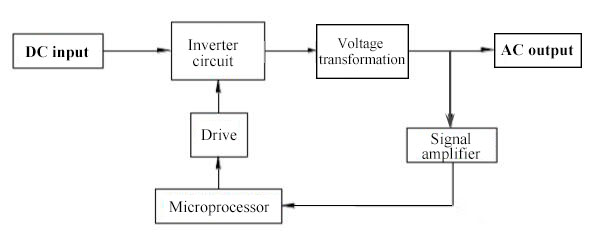
Combiner box
In the solar PV power generation system, a combiner box is used to reduce the connection between the solar PV cell array and the solar inverter. We can connect a certain number of PV cells with the same specifications in series to form a PV string and then connect several PV strings in parallel to the lightning protection combiner box. After the junction in the combiner box, the controller, DC distribution cabinet, solar inverter and AC distribution box are used in a matched manner, to constitute the entire PV power generation system, thus realizing the connection with the mains supply.
In order to improve the reliability and practicability of the system, the PV special DC lightning protection module, DC fuse protector and circuit breaker are arranged in the lightning protection combiner box, thus being convenient for users to grasp the working condition of solar cells in time and ensuring the solar PV power generation system to play the biggest effect.
DC distribution cabinet
The DC power distribution cabinet is mainly used in large-scale PV power plants to connect combiner boxes and PV inverters. In addition, it also provides lightning protection and overcurrent protection, monitoring the single string current, voltage and lightning arrester status of the PV array, as well as the status of the short circuit.
AC distribution cabinet
Its main function in the PV system is the switchover function to the inverter, ensuring the normal power supply of the system, and the power measurement of the circuit at the same time.
Lightning protection system
The bracket of the solar cell array adopts the metal material and occupies a rather big space, and it is usually placed on top of the building or in an open area. In case of a lightning, it is especially easily to be damaged because of the lightning. In addition, the solar panels and inverter are rather expensive. In order to avoid the economic loss caused by lightning, the effective lightning protection measures are essential. The basic schematic diagram of PV system's lightning protection is shown as below.
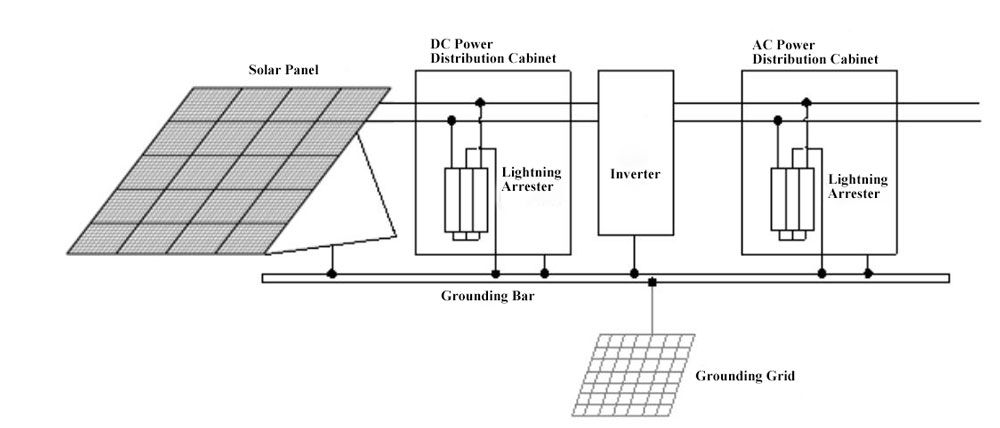
Environment monitoring system
The environmental monitoring system is mainly constituted by a main collector, a total solar radiation collector, a wind speed and direction collector, an outdoor ambient temperature sensor (with a light shutter), a surface temperature sensor, a total radiation sensor, a wind speed sensor, a wind direction sensor, a RS485 communication, a wind pole, a wind cross arm, a sensor cross arm and other components, thus completing the monitoring of five data on environment of the solar PV system (outdoor ambient temperature, battery panel surface temperature, total solar radiation, wind speed and wind direction).
Monitoring system
The solar power station monitoring system adopts a computer control system with the PLC programmable controller and modern computer network communication technology as the core, combines the characteristics of solar power generation system, and uses the anti-electromagnetic interference and electromagnetic compatibility technologies to realize the control of solar energy system. It transmits the analog acquisition signal to the local monitoring computer after PLC program treatment to reflect various operating states of the equipment, so that we can control and discover the problems and faults of the solar power system timely.
